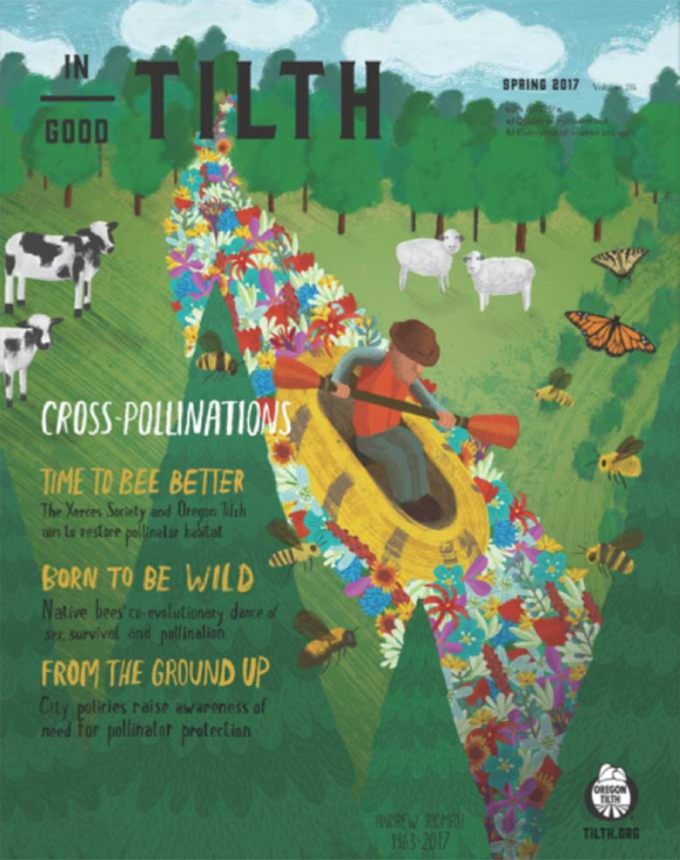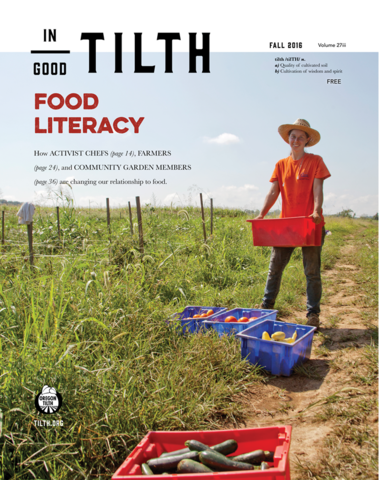It takes nearly 10 minutes for the men to put on the heavy canvas suits. Where an ordinary beekeeper’s outfit would have a wide-brimmed hat with a veil attached, these suits have a hardhat and wire mesh protecting the face. Protective footwear and thick rubber gloves, the type you’d expect to find on a fishing boat, complete the attire.
The strange scene unfolds at dusk on a field about 100 miles west of the central Indian city of Nagpur. A few days earlier a farmer had spotted a honeycomb attached to a tree branch at the edge of the field. The comb is typical for Apis dorsata, the rock bee. It’s not only about twice as big as Apis mellifera, the prevalent honeybee variety in the U.S., it’s also very aggressive and its sting is dangerous. Experts call the Apis dorsata one of jungle’s most dangerous animals. The men who are about to harvest the honey will need good protection.
As darkness falls two men, armed with a knife and a bucket attached to a rope, climb into the tree. In a few minutes they’ve cut out the honeycomb, placed it in the bucket and lowered it to the ground. As soon as the men reach the ground they take the bucket and hurry away as fast as their cumbersome suits allow. Even from the safety of the car parked 30 yards away I can see the bees: thousands of black dots that stream out of the tree and form a dark, buzzing cloud around the men.
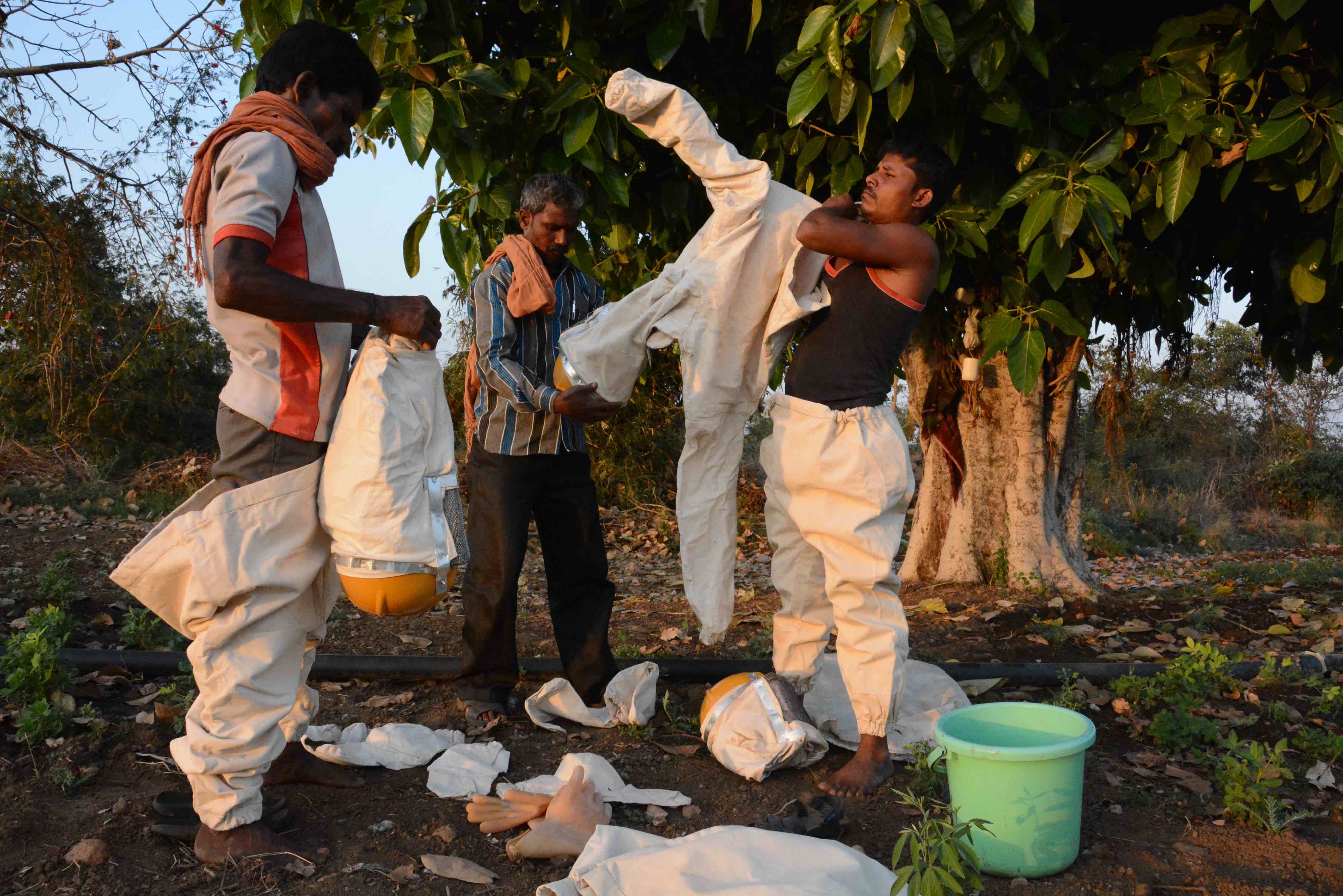
An essential harvest
For India’s original inhabitants, called “tribals,” gathering forest products like Dorsata honey is a way of life. They collect it between March and May, when the honey has a comparatively low moisture content and an intense caramel flavor. The tribals in this part of central India farm cotton as a cash crop, at least if there’s enough rain. At the height of the dry season in late spring there is little to do in the fields and the money they make from selling honey is often their only source of income.
Traditionally, the tribals used fire to smoke out the bees and get to the honey, destroying the whole colony in the process. In 2000, an NGO in Nagpur started looking into sustainable ways to harvest honey and provide incomes for the farmers. They helped develop the protective suits and a method of cutting the honey out of the comb without destroying the colony. The bees can repair the gap and the colony survives. As a result, there are now many more dorsata colonies. That’s good for them and for the forests. The rock bees provide important pollination services and help re-establish and maintain much needed biodiversity in Indian forests threatened by a huge demand for wood.
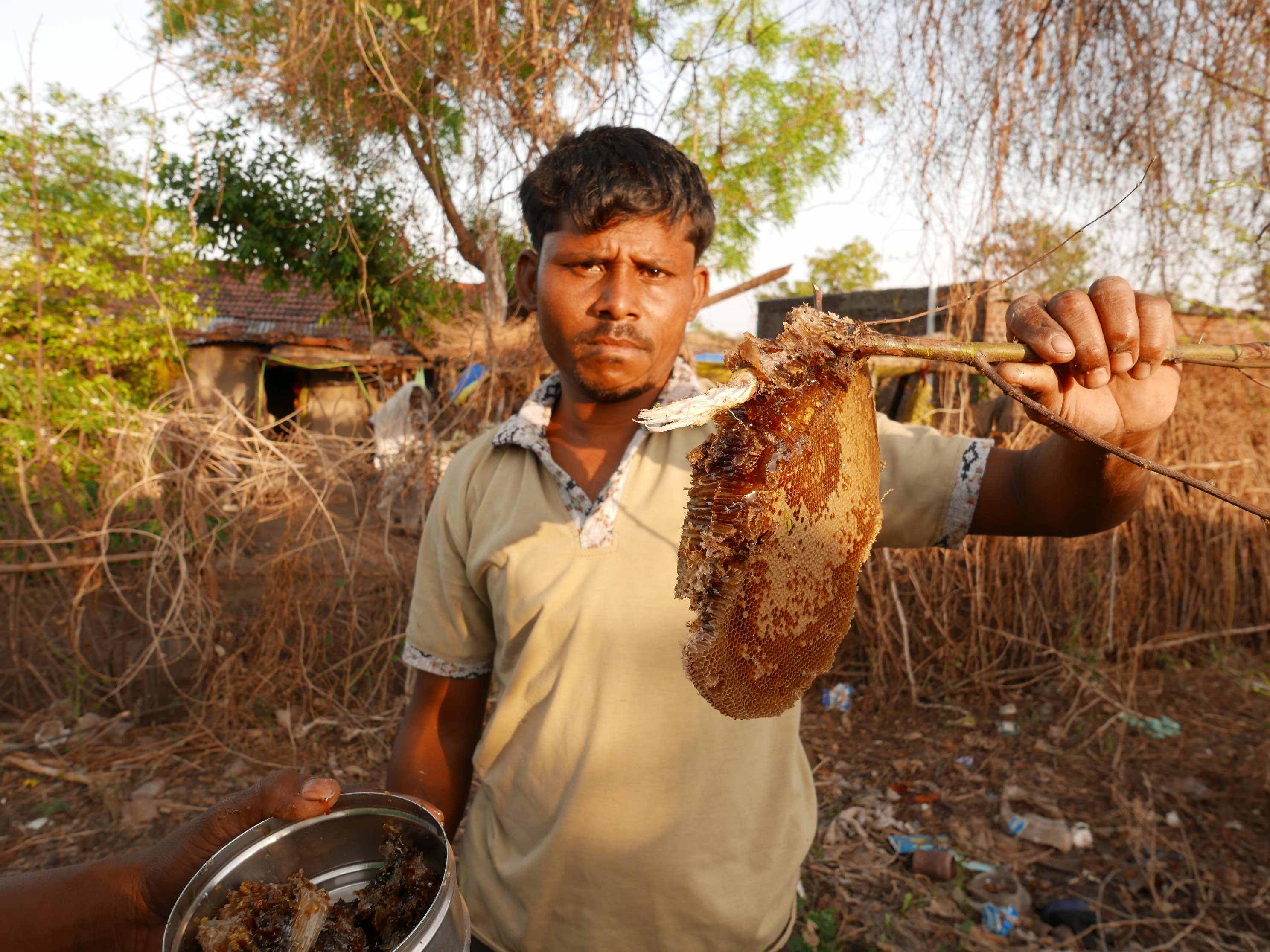
Pollination services in Gujarat
About 600 miles to the west, in southern Gujarat, farmers keep a different species of honeybee specifically for the pollination of field crops and fruit and nut trees. Harvesting honey is secondary.
Some old farmers can remember a time when the hills in this part of the state were covered with dense forests of teak, ebony and sandalwood. Today, a single-lane road leads through light forests and lots of bare slopes. Laws allow tribal people to use the land, but encroaching villagers have stripped the trees for firewood and criminal poachers have logged much of the valuable lumber. As the forests decrease so do the bees.
Three relatively peaceful honeybee species are indigenous to the region: Apis cerana is a little smaller than Apis mellifera but can be kept in a bee box. Even smaller is Apis florea which, like its aggressive and bigger relative Apis dorsata, builds combs in the open, attached to branches or other overhanging structures. When the tribals find an Apis florea colony in the wild they “resettle” it with the help of a mosquito net: the part of the branch with the comb attached is cut out and tied into a tree in the farmer’s own garden. The third variety is a tiny, stingless bee (trigona) which lives in special earthen vessels which the farmers provide. These colonies produce one to two tablespoons of honey per year—a delicacy.
The NGO that started beekeeping courses for the tribals six years ago initially thought that Apis cerana honey would provide an additional income: most farmers grow field crops like lentils, chickpeas and have mango and cashew tree orchards.
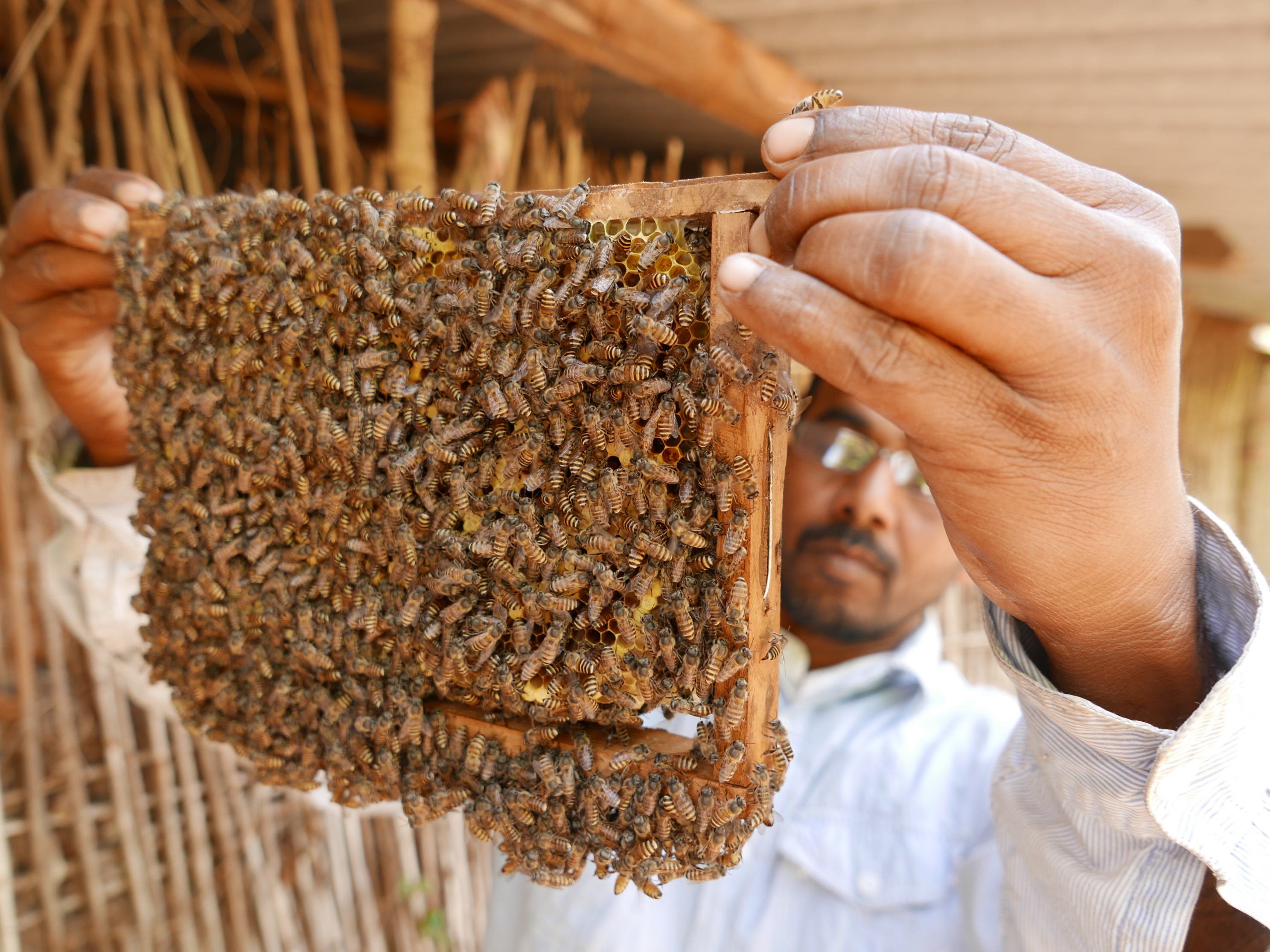
A case in point
“In 2009 I started with two bee boxes,” said Madhu Bhoya. “At the end of the first season the yield from my cashew trees was 50 percent higher.” Other farmers report yield increases from 30 to 90 percent. The NGO initiated a study to establish the pollination benefits for different crops. The most important cash crop are cashews, where yields increased between 45 and 50 percent. For chilies, yields shot up by 400 percent.
Today, Madhu has 20 bee boxes and hopes to add more. He previously planted small grains at the start of the monsoon which were harvested in November. Now he sows two other cash crops, mustard right after the main harvest, followed by sesame in February. Bees feast on their flowers. As a result, Madhu Bhoya has high yields and enough additional income to support his family and pay for his children’s education. He no longer has to work as a day laborer to make ends meet. Instead, he trains other farmers to be beekeepers. And he is part of a project to test existing bee boxes and develop new ones. A wooden box costs about 800 Rs ($11). For an Indian farmer that’s a lot of money. Bee boxes made from straw and mud are cheaper and better for the bees as they stay cooler than the wooden boxes. But they can’t be moved. Madhu and his colleagues now work on a bamboo framed box with mud plastering—a kind of half timbered, portable bee box.
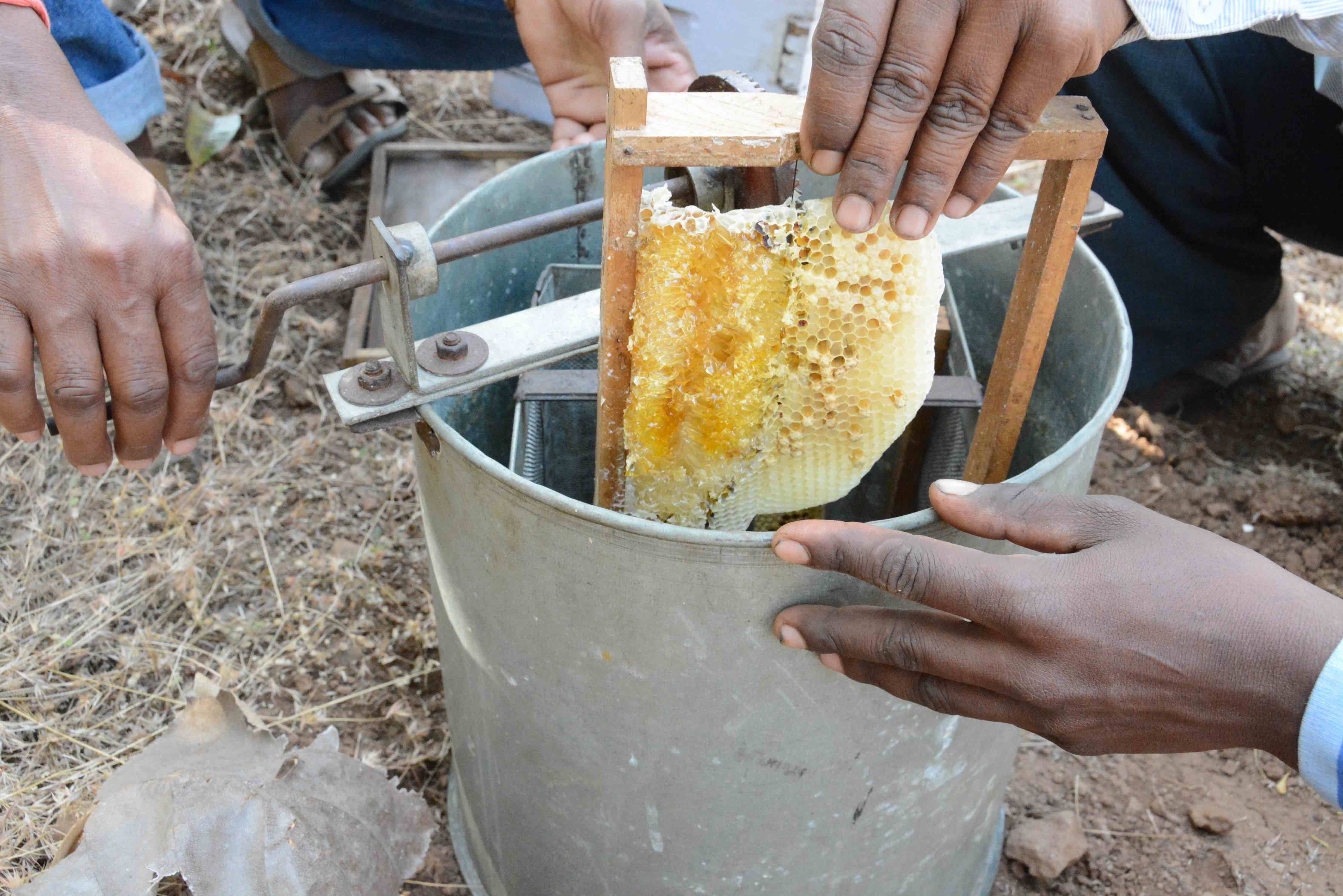
But is it organic
The tribals work closely with nature, but is their honey organic? Under organic regulation, organic honey is defined as honey harvested from organically managed hives. Bees forage within a three-to-five-mile radius of their hive, which makes it highly unlikely that they’ve only visited certified organic flowers. But organic hive management has been defined: among other measures varroa treatment can only be done with approved natural substances, the wings of the queen cannot be clipped (common in conventional beekeeping to suppress swarming) and the bees can only be fed with certified organic sugar or their own honey.
But in some regions organically-managed bees collect nectar only from organic and wild forest flowers. One such region is in Uttarakhand, an Indian state in the foothills of the Himalayas. Two of India’s most important rivers, the Ganges and the Jamuna, originate here and with its 24,000-foot-high icy peaks, its forests, remote valleys and ancient temples the region is also known as Devbhumi, the “seat of the gods.”

The seat of the Gods
Devbhumi is also the name of an NGO that is working to open markets for honey farmers in these remote mountain valleys. “Remote” is an understatement. Imagine driving for two days on narrow, winding roads, across passes where you see remnants of snow in June, descending into yet another valley, navigating endless hairpin bends, some so narrow that you have to reverse back and forth to take the turn. Farmers here live off subsistence agriculture, growing millet, amaranth and red rice, lentils, beans, vegetables and fruit trees. The fields are sometimes no bigger than a good-sized living room in the U.S. But in this space eight to 10 different varieties are grown and harvested by hand. And everybody keeps bees, Apis cerana to be precise. Wall hives offer easy access to the frames from inside the house. But for the more remote fields there are bee boxes, too.
For the villagers, honey is their only cash crop and they’re careful not to take too much so as not to endanger the colony. The money is needed to buy essentials like salt, cooking oil, soap, detergent, clothes and utensils. About once a month, five or six women cram into a shared taxi for the day trip to the nearest small town.
Everything that’s on sale in the local market has been transported by road and on small trucks from the plains (nothing much bigger than a pickup gets through the hairpin bends). Thus agriculture is organic by default: the fields are often accessible only by foot and too small for farm machinery. Lentils and peas are a staple and ensure soil nitrate levels. Those who have a cow put manure on the vegetable beds. And even if they could afford it, farmers don’t use chemical herbicides and pesticides. Why? “We eat what we grow,” is the answer. So the NGO collects the honey from the ‘“seat of the gods” and sells it in upmarket shops in India’s big cities where a growing number of consumers understand the benefits of organic.












